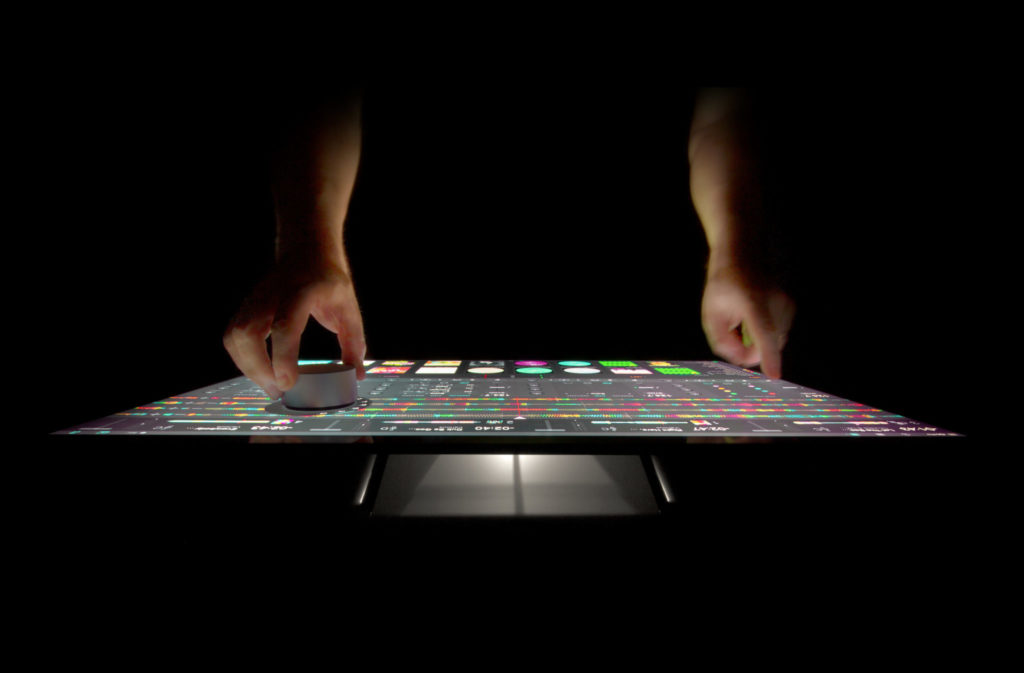
 It’s no secret that Microsoft wants developers to build more apps for the Windows 10 platform. But how will the company convince the tech ecosystem to commit the time and resources necessary to build the software. Answer: offer an easy port. Windows Bridge for iOS is a long-gestating open-source project that allows developers to import Xcode into Visual Studio via a single tool; alternatively, those developers can also use Objective-C to build an app within Visual Studio. With a new Creators Update SDK, Visual Studio 2017 offers support for new Microsoft hardware such as the Surface Dial, a controller for the Surface Studio PC that resembles a hockey puck and lets users manipulate onscreen elements by twisting it. But how easy is it to actually port an iOS/macOS app to Windows 10 using the Bridge? According to Michael Simmons, VP of product for Algoriddim, the company behind the popular Djay Pro app for iOS, using the Bridge was a pretty straightforward process. “We had to adjust a bit for Windows screen sizes, but it’s not tons of work,” he said in an interview. “[The Bridge] got us to 80 percent, and we tweaked the 20 percent.” Djay Pro, which allows anyone to mix and mash songs like a professional DJ, has been a longtime hit on Apple’s platforms. Despite that success, Algoriddim’s relatively small team never devoted the resources necessary to porting the software to Windows. “Windows 7 would have been too much work before the Bridge,” Simmons added. Algoriddim wanted to keep the same code base for the port, which would make the software easier to maintain. At the same time, however, the team wanted to take advantage of the Surface Dial, which operates via Bluetooth. Thanks to the Surface Dial API, anyone mixing songs with Djay Pro can place the Dial directly on the screen and spin it in order to manipulate tracks. (Of course, being able to use the Dial is contingent on owning the Surface Studio.) For Algoriddim, porting Djay Pro onto Windows is all about expanding its audience. Although many professional DJs rely on the Mac in order to spin tunes, millions of music lovers all over the world continue to rely on Windows machines—especially in other countries where Macs may not be as prevalent. As for Microsoft, the Bridge comes with its own high stakes. If the company can convince developers that porting apps between iOS/macOS and Windows 10 is relatively easy, it can perhaps expand the software portfolio available to users—allowing it to compete more effectively against iOS and Google Android, which have carved off sizable portions of the overall operating-system market.
It’s no secret that Microsoft wants developers to build more apps for the Windows 10 platform. But how will the company convince the tech ecosystem to commit the time and resources necessary to build the software. Answer: offer an easy port. Windows Bridge for iOS is a long-gestating open-source project that allows developers to import Xcode into Visual Studio via a single tool; alternatively, those developers can also use Objective-C to build an app within Visual Studio. With a new Creators Update SDK, Visual Studio 2017 offers support for new Microsoft hardware such as the Surface Dial, a controller for the Surface Studio PC that resembles a hockey puck and lets users manipulate onscreen elements by twisting it. But how easy is it to actually port an iOS/macOS app to Windows 10 using the Bridge? According to Michael Simmons, VP of product for Algoriddim, the company behind the popular Djay Pro app for iOS, using the Bridge was a pretty straightforward process. “We had to adjust a bit for Windows screen sizes, but it’s not tons of work,” he said in an interview. “[The Bridge] got us to 80 percent, and we tweaked the 20 percent.” Djay Pro, which allows anyone to mix and mash songs like a professional DJ, has been a longtime hit on Apple’s platforms. Despite that success, Algoriddim’s relatively small team never devoted the resources necessary to porting the software to Windows. “Windows 7 would have been too much work before the Bridge,” Simmons added. Algoriddim wanted to keep the same code base for the port, which would make the software easier to maintain. At the same time, however, the team wanted to take advantage of the Surface Dial, which operates via Bluetooth. Thanks to the Surface Dial API, anyone mixing songs with Djay Pro can place the Dial directly on the screen and spin it in order to manipulate tracks. (Of course, being able to use the Dial is contingent on owning the Surface Studio.) For Algoriddim, porting Djay Pro onto Windows is all about expanding its audience. Although many professional DJs rely on the Mac in order to spin tunes, millions of music lovers all over the world continue to rely on Windows machines—especially in other countries where Macs may not be as prevalent. As for Microsoft, the Bridge comes with its own high stakes. If the company can convince developers that porting apps between iOS/macOS and Windows 10 is relatively easy, it can perhaps expand the software portfolio available to users—allowing it to compete more effectively against iOS and Google Android, which have carved off sizable portions of the overall operating-system market. 
